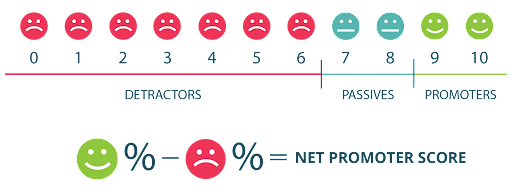Customer satisfaction is essential in ecommerce. Online shopping has gained immense popularity in recent years, creating a competitive landscape for ecommerce brands. If you’re playing the field, you need to know how to keep your customers happy. This is the only way to ensure they don’t take their business to a competing brand.
Successful brand owners ask themselves tough questions so they can get better. One of the first questions is about customer experience and satisfaction. After all, it takes more money to acquire new customers through the marketing funnel than retain existing ones. Creating loyalists should be an ecommerce store’s biggest objective.
Before we begin, ask yourself a couple of important questions. Firstly, what is a good ROI for ecommerce? Now that you have your goal in mind, qualitative or quantitative, we can proceed. Secondly, what is the optimum customer experience you can provide? Thirdly, are you confident that current customers are receiving an adequate experience on your website? Questions like these can help guide you towards an accurate picture of customer satisfaction.
Keep a note of these questions as you learn how to track and measure your customer satisfaction below.
Qualitative Vs. Quantitative Analytics
Before we dive in to customer satisfaction measurement, let’s look at the role of both qualitative and quantitative assessments:
- Quantitative data is all about numbers. There are several ecommerce metrics that you can measure to track customer satisfaction. These include the Click Through Rate (CTR), Visitor Count, and time spent on site etc. This data is usually collected through analytics, A/B testing, surveys and more. You need to combine quantitative information with qualitative data to understand the actual picture.
- Qualitative data goes beyond numbers to give you information you can subjectively interpret. You can do sentiment analysis to understand why customers aren’t responding to your ecommerce platform. For example, quantitative data can tell you that you’re not getting enough calls. Qualitative data can show you that customers don’t like your IVR system, i.e., your automatic menu might be confusing and turning customers away.

Why is Customer Satisfaction Important?
According to Zendesk, 70% of customers have reported buying from a brand that gave them excellent customer service. You might think this only applies to new customers, but the statistics show otherwise. 81% of customers said that a satisfactory customer service experience made them into loyalists, i.e., they made a repeat purchase.
The statistics don’t lie. If you want to increase your ecommerce sales in 2022, you need to aim at customer satisfaction. Excellent customer service has always been critical for all businesses, traditional or digital. The importance that people and business owners give to restaurant customer service is similarly expected by ecommerce customers.
Customer retention, while tricky, is the pot of gold at the end of most businesses’ rainbows. Repeat customers become promoters and advertise your business for free. Let’s take a look at how you can measure customer satisfaction effectively.
A Guide to Measuring Your Ecommerce Customer Satisfaction
Here are some ways to measure customer happiness:
1. Agile Testing
The Agile development model translates across industries. It breaks your project into phases and a core component is testing. Say you’ve designed your website with the help of various teams. There will be a period of strenuous testing during which developers will identify and fix bugs. Early testing is effective because making changes later can be expensive.
The Manifesto for Agile Software Development can help you create a homogenous Agile test for your website. You can figure out how to add value to your customers’ experience after studying test results. For example, you can do exploratory testing to see how a typical consumer would interact with your ecommerce platform, and how satisfactory they would find it.
2. Calculate Your Net Promoter Score
Your Net Promoter Score (NPS) measures two crucial factors: customer satisfaction and retention. It’s a kind of survey that asks customers how happy they are and whether they would promote your business through Word of Mouth.
There is a scale from 0-10 to rate customers, with 0 being the lowest and 10 being the highest value. Customers who score between 1-6 are called detractors, meaning they are least likely to promote or recommend you. A score between 7-8 indicates passives, i.e., customers who can lean this or that way. Finally, a score of 9-10 shows your promoters, i.e., customers who are loyalists and bring you business.

3. Organize Focus Groups
A great way to measure customer satisfaction is to go to the source. Set up a focus group with participants that fulfill your typical customer archetype. Get them to sign an NDA for full secrecy – find a cloud based proposal software you can use – and begin. Take them through the customer journey for your ecommerce platform and note down the results of your ecommerce customer satisfaction.
Ask them to answer questions to a moderator or fill out short surveys that can help you understand their sentiments. Real people testing your platform will help you work towards actual goals for your customers.
4. Send Out Surveys
A lot of people don’t enjoy filling out surveys unless they’re about something important to them. That being said, a well-filled survey can give you crucial information about your customer satisfaction. You can incentivize this process so customers want to fill out your surveys.
Surveys can be sent out through email or your customer contact center. The latter is easy to set up through a virtual PBX. Just look for the best virtual PBX setup and your customer service reps will be able to make calls through the Internet. All emails and calls should lead with an incentive for the customer. For example, you can offer them a discount coupon for when they visit your website. All they’ll have to do is answer some questions.
5. Offer Live Chat
Another way to get customer feedback is through live chat, treating it as a form of conversational commerce. You can set this up in your app or on your landing page. Make sure to streamline this in the testing process so it doesn’t come across as intrusive. You want customers to give you feedback without being pestered through their shopping experience.
You can set up your live chat with a chatbot that urges the customer to answer a few questions. These prompts can have customized responses based on the customers’ answers. At the end of the survey, you can display a VoIP local number for users to call in case of any concerns. This will assure them that their data didn’t disappear into the void and they will feel heard and cared for.

6. Respond to Reviews
Many businesses mean well but they can end up making a key mistake: ignoring customer reviews. This is more likely if you have an expansive ecommerce platform where you’re busy with other concerns. Customer reviews are critical when it comes to determining customer satisfaction and should be taken seriously.
The advantages are two-fold. The first is that reading these reviews will give you a better understanding of your customers’ experiences. The second is that by replying to your customers, you will make them feel heard and therefore have a good chance of retaining them. As we’ve discussed, customer retention should be your top priority as an ecommerce business owner.
7. Surf the Data Bank
Successful platforms are set up to continuously collect data from consumers. We looked at some of the metrics you can use to track customer satisfaction, such as CTR. Your website measures these data figures and stores them for necessary reports and tracking.
Pay attention to this data bank. Business owners sometimes leave facts and figures to the backend team. This is usually because their data warehouse architecture is complicated. Create a system that works for you and make sure you’re going through insights and analytics at least once a week. You’ll get a richer understanding of your customer satisfaction this way.

Use the Five Second Test
There are online tools that can test your website for you. One of these tests is called the Five Second Test and the results might be surprising. The test revolves around the insight that users who click on to websites will click off in five seconds if they don’t like the design. For example, if you have an ecommerce store but your inventory isn’t arranged in online menus or the page looks cluttered, customers will leave.
The results from this test will show you what you can change about your website. Ask yourself whether the landing page is an inviting space for users. Think of it like a physical store. When prospective customers don’t like what they see, they immediately walk away. As a business owner, you want your customers to spend some time on your digital store so they can make larger purchases.
The Five Second Test can highlight flaws in your UI/UX design and these are normally easy fixes. It will also let you explore your customers’ likes and dislikes but remember to combine various analytics to do this. Use quantitative and qualitative data points together to create a holistic picture that reflects your customer satisfaction.
